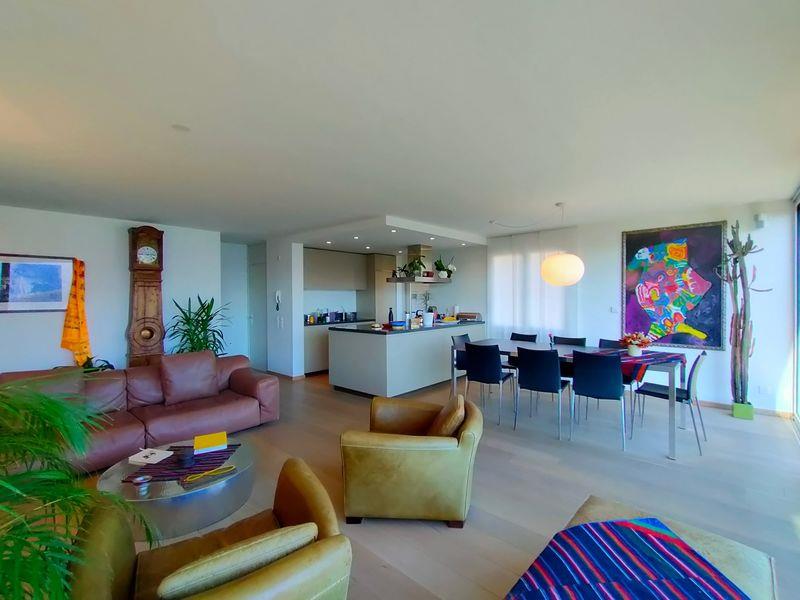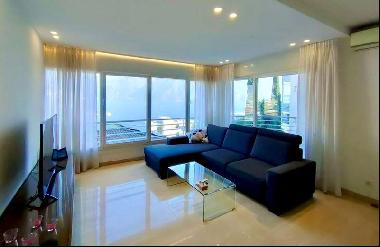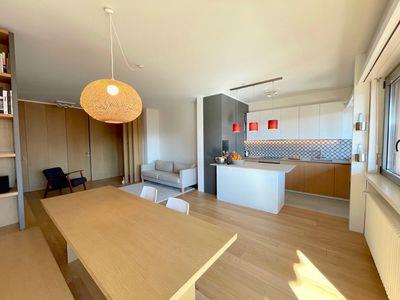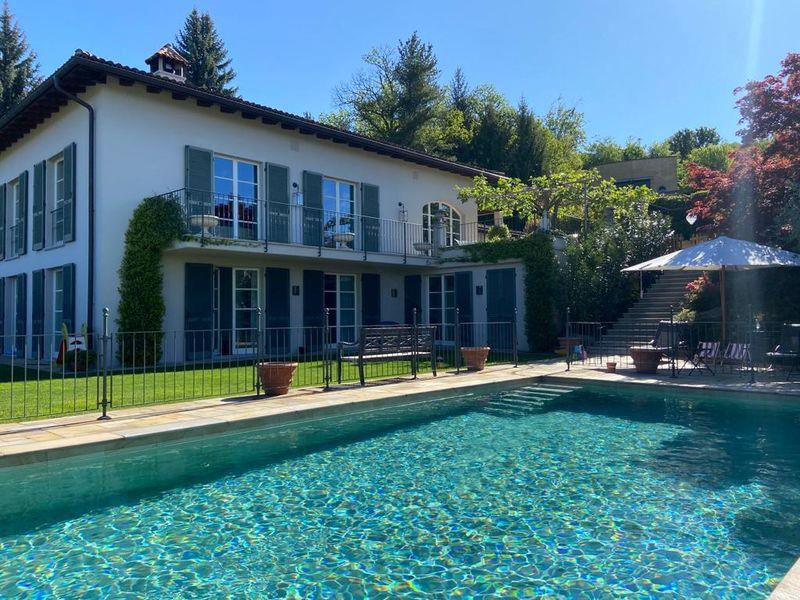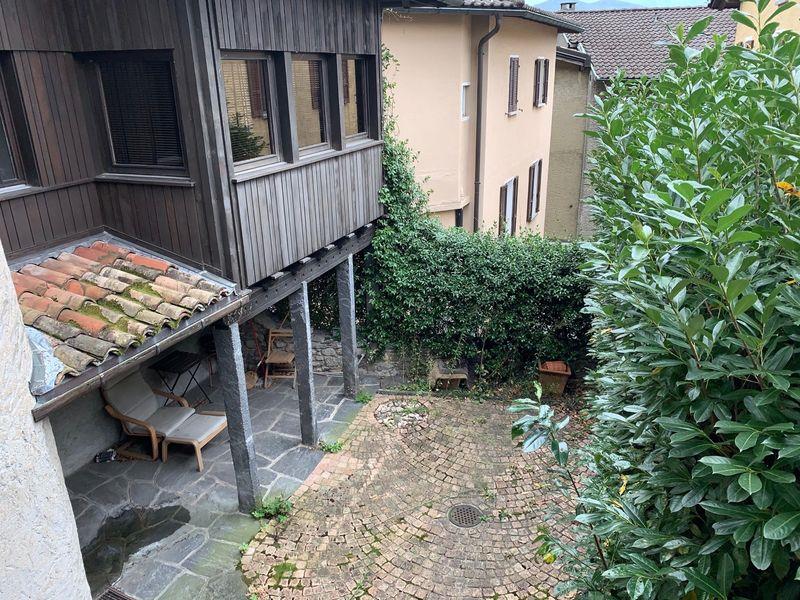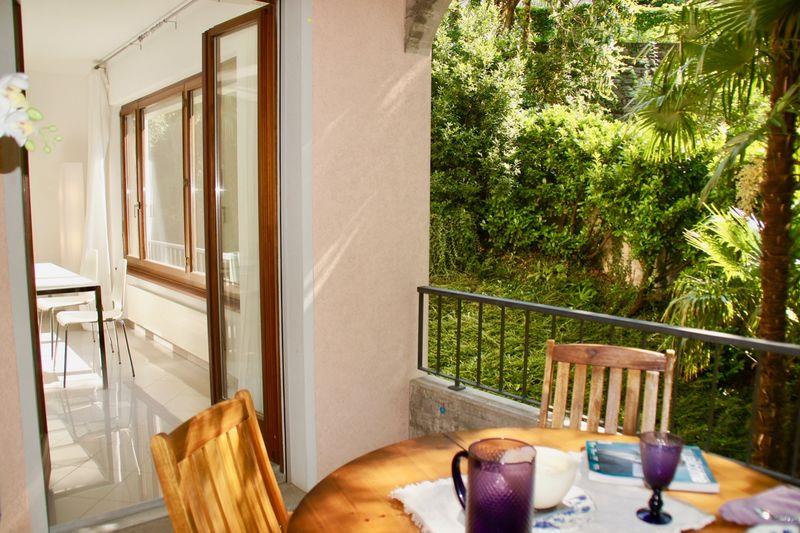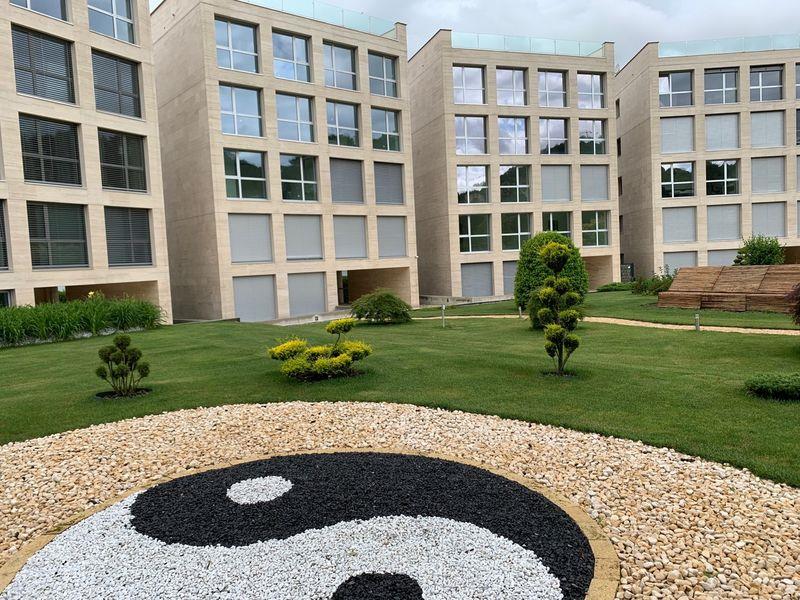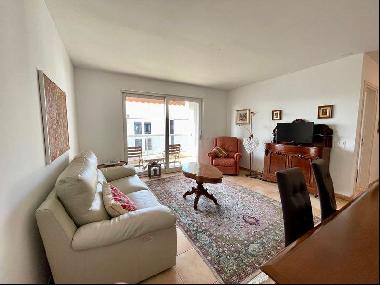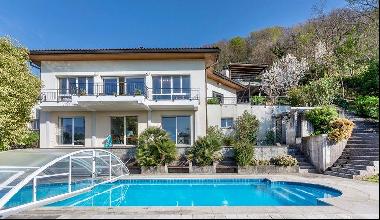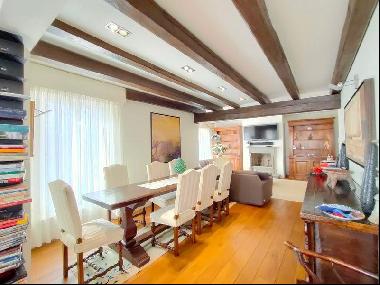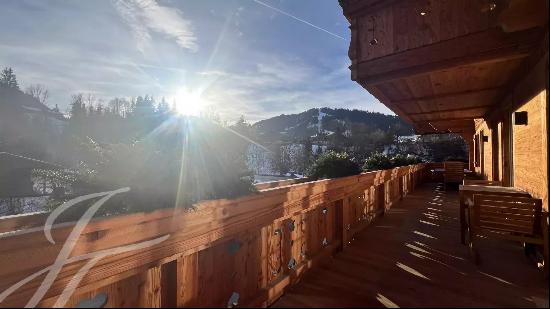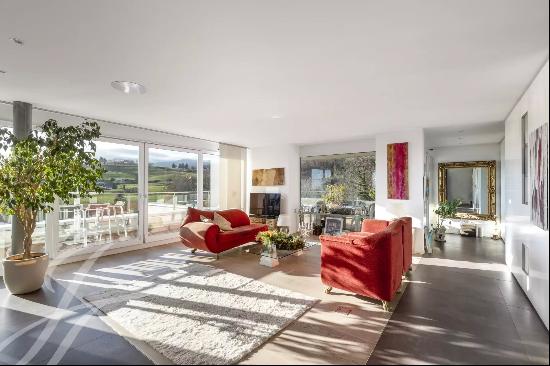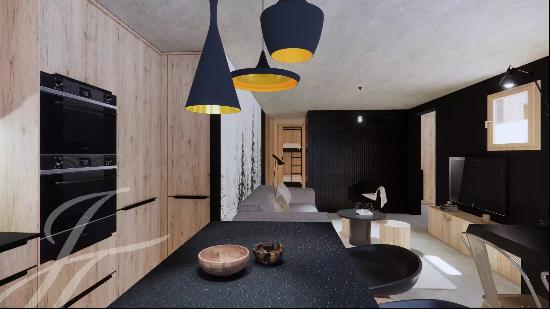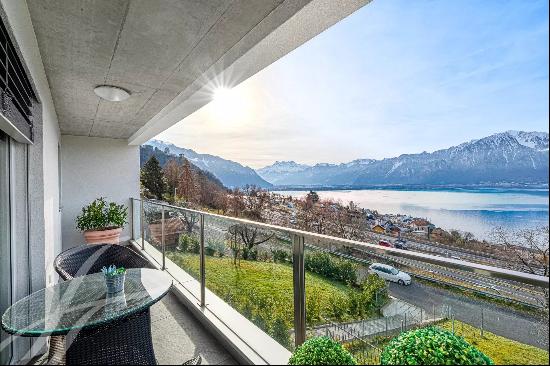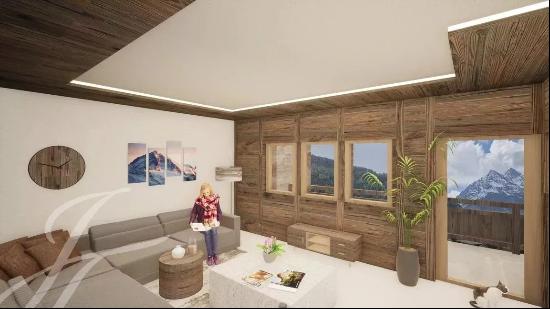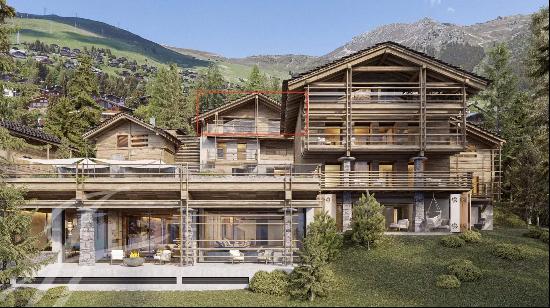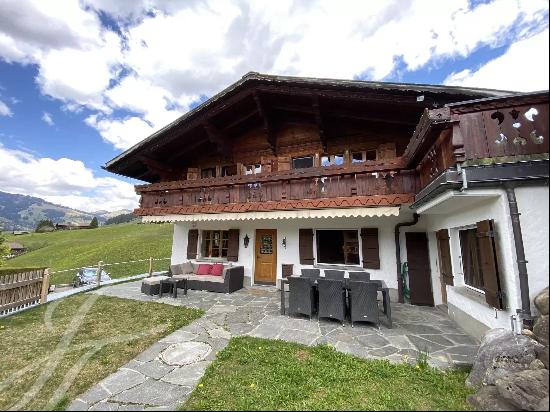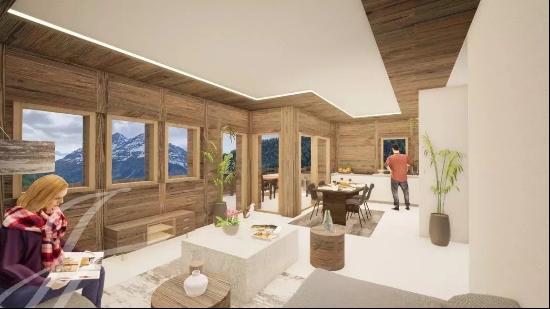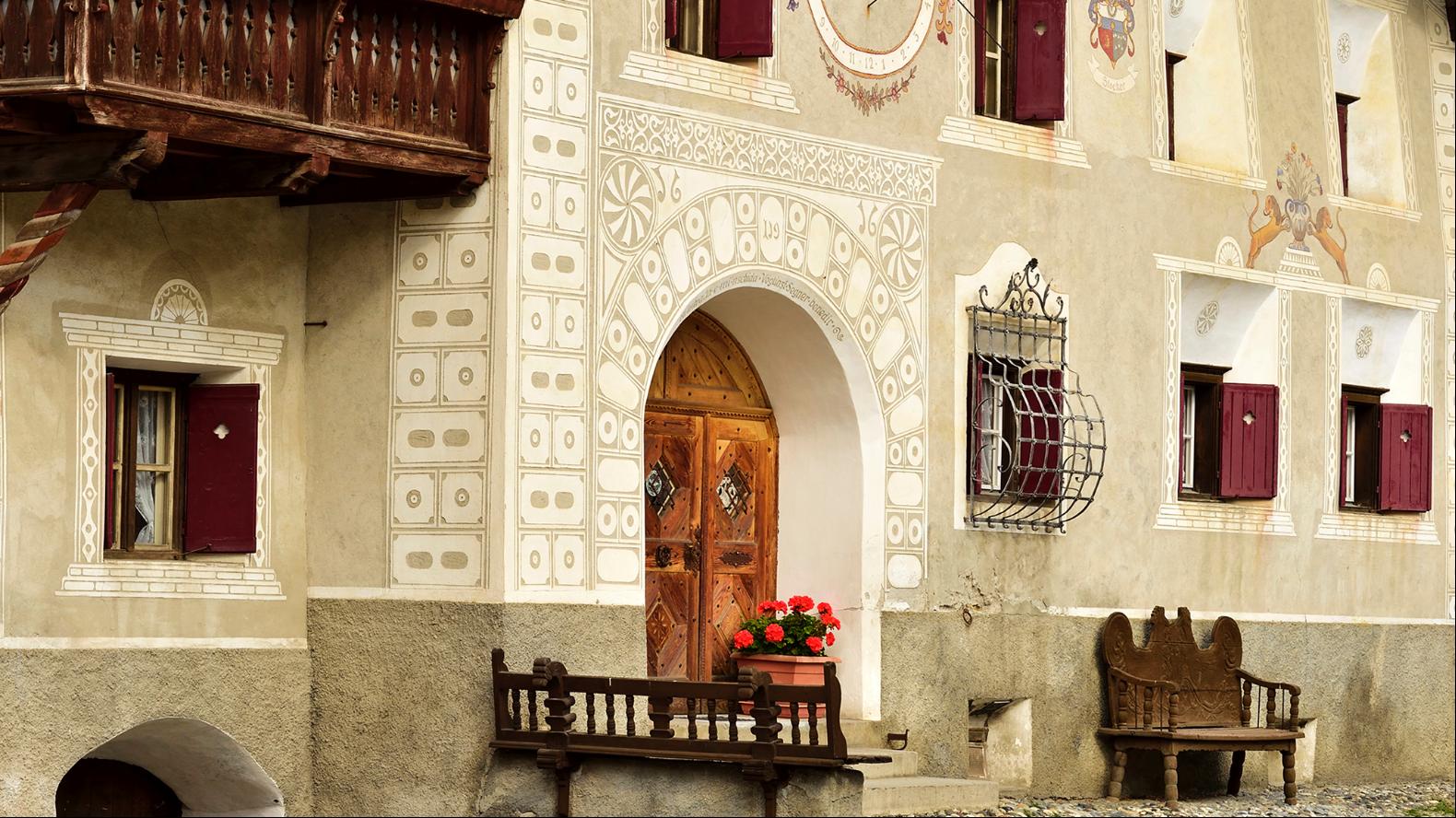
By Francesca Peacock
It’s the time of year when many of us are dreaming of a trip to the mountains. Were we to head for one popular skiing destination, we’d find the beautiful scenery of snow-capped mountains matched by a certain type of building: the Engadine house.
Where other Alpine regions have chalets made from timber, these stone houses are unique to the Engadine valley that runs through the eastern part of the Swiss Alps, home to St Moritz. Defining features include thick walls, deep-set windows, archways and gabled roofs — but the most distinctive feature is surely their sgraffiti. From the Italian sgraffiare meaning “to scratch”, sgraffiti is the name for the etched drawings on the facades of these houses. From geometric symbols to mermaids, fish, and even dragons, each drawing was supposed to relate to the family who made the house their home.
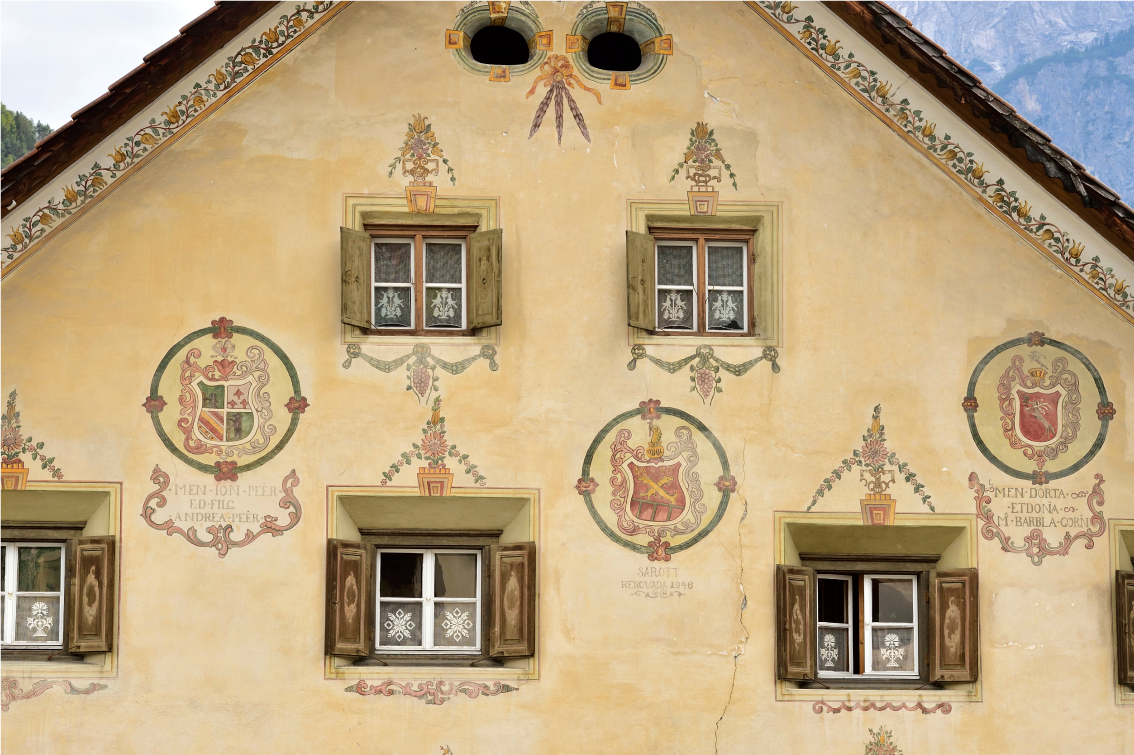
Such eye-catching designs shed light on the history of these properties: the engravings were originally created by Italian builders who made the short journey over the border into the Swiss canton of Graubünden in the 16th century. They continued to be built throughout the 17th and 18th centuries, with the sgraffiti either done by Italian workers or local artisans who had learnt the trade. Sadly, in later years these drawings were sometimes covered over, though many still survive today.
But why are these houses so unique? Their difference is due, in part, to the very conditions that now make the Engadine valley such a hotspot for winter sports. The climate was simply too harsh for timber to provide enough protection — stone was the way to keep warm, and not just for humans. The traditional Engadine house is divided in two and, in unmodernised houses still used for farming, one side is taken up by a hayloft and space for animals: both humans and livestock live behind the same grand facade.
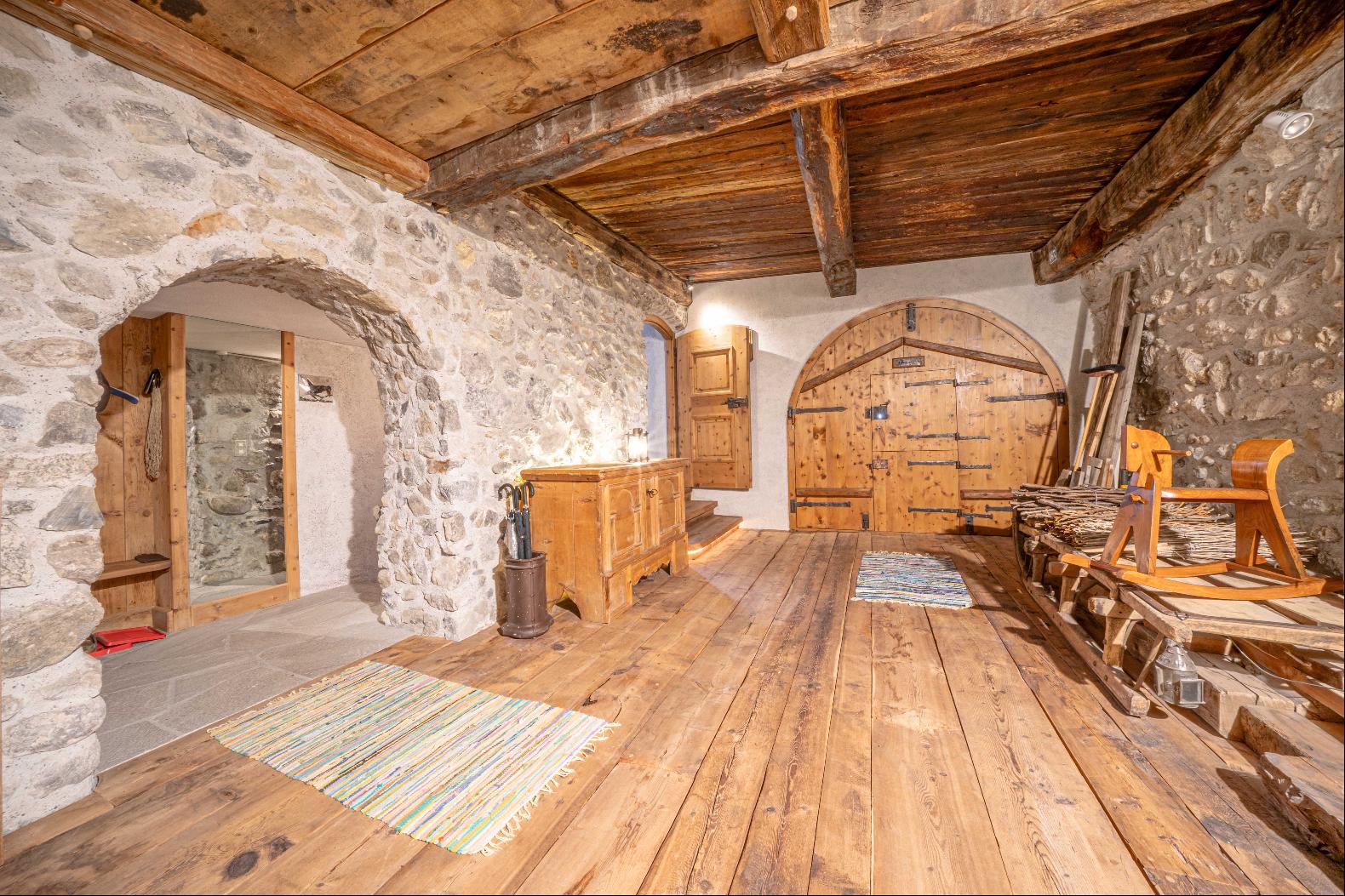
Nowadays, as the valley has become more of a tourist destination, unmodernised houses are much harder to find. The large plan and enviable village location of such homes are the perfect ingredients for a dramatic property conversion. In many, the traditional sùler – originally the entrance hall used to store agricultural tools — has become a welcoming retreat from the mountains. The old stüva, or living room, is grand, often with panelling, carved features and a wood-burning stove. This house for sale in Ardez — a village in the lower end of the valley — was built in 1680 and now boasts a sauna and a fitness space alongside its many historic features. A house for sale in Celerina, near St Moritz, was built even earlier, in 1406; its medieval walls jut up against later additions, with the possibility for further renovation.
Although many of the modernised Engadine houses for sale, such as this one in Zuoz, showcase the valley’s distinctive architectural traditions, it’s a heritage that is clearly open to change. As Maximilian Stamm, managing partner of real estate company Engel & Völkers of St Moritz, points out: “These homes have become canvases for modern fusion, where renowned architects such as Norman Foster and local talents such as Arndt Küchel blend historical character with contemporary design.” Foster is an architect deeply embedded in this region of Switzerland, recently redesigning two existing hotels in St Moritz to ape the features of a traditional Engadine stüva.
With historic charm and a piece of regional Alpine cultural history — plus stylish renovations and space for ski holidays aplenty — it’s no surprise that these distinctive houses are in such demand.
Photography: Albert Ceolan/De Agostini Picture Library/Getty Images; Engel & Völkers


